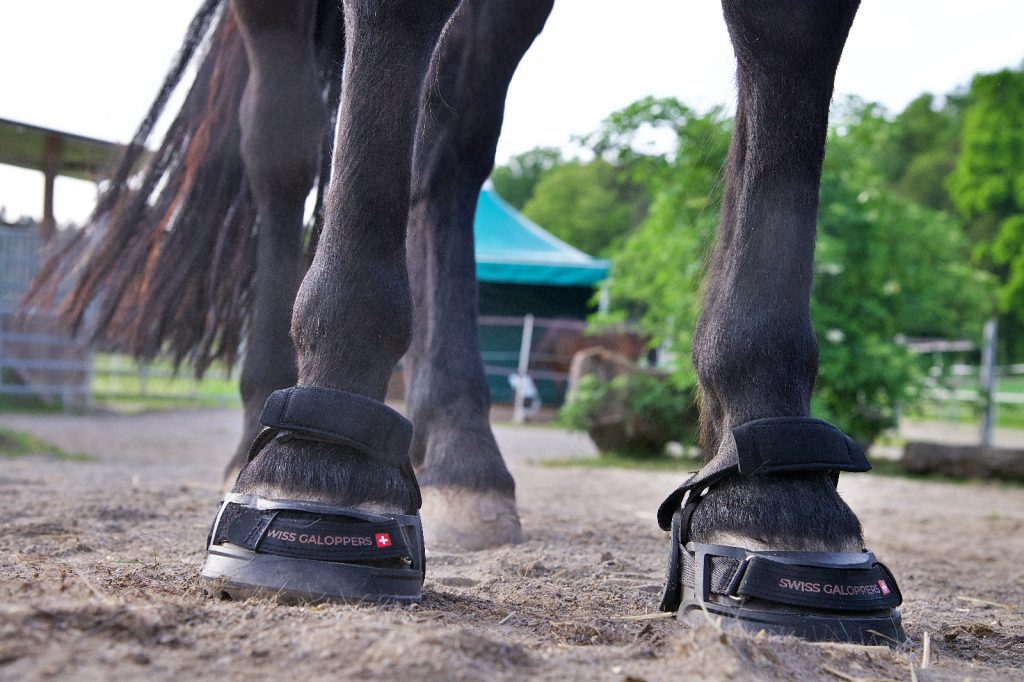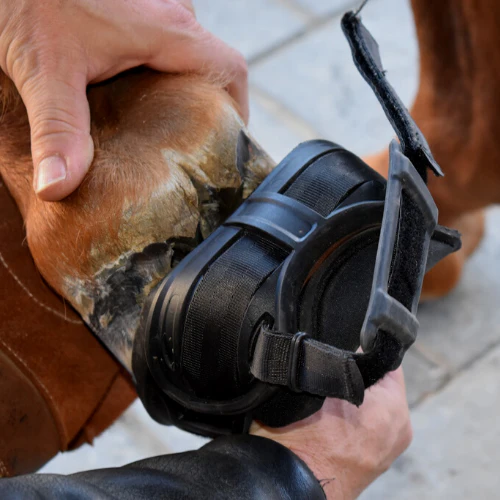Hoof Boots vs. Horseshoes: A Cost and Health Comparison for Horse Owners in Switzerland, Europe, and the U.S.
17. October 2025
Choosing the right hoof protection is one of the most important decisions for any horse owner. While metal horseshoeshave been used for centuries, modern hoof boots are now a proven, flexible, and removable alternative — offering both economic and health advantages.
This article compares hoof boots vs. horseshoes in terms of cost, durability, and hoof health, and explains why Swiss Galoppers hoof boots are becoming the preferred choice for riders across Switzerland, Europe, and the United States.
Cost Comparison: Hoof Boots Offer Long-Term Value
Traditional horseshoes require farrier visits every 6–8 weeks for trimming and replacement. These visits add up fast:
- Switzerland: CHF 150–250 per shoeing → CHF 900–2,000/year
- Europe (UK): £60–100 (≈70–115 EUR) → £360–800/year (420–930 EUR)
- United States: $100–400 USD per session → $600–2,400/year
By contrast, hoof boots represent a one-time investment that can last 1–2 years with proper care. A premium pair like Swiss Galoppers costs around $249 USD (≈230 EUR / CHF 240) and can be fitted by the owner.
You’ll still need regular trimming, but you avoid constant shoeing costs — saving hundreds annually.
Swiss Galoppers hoof boots are built for up to 2,000 km of use, while most competitors last 500–1,000 km depending on terrain. This makes them one of the most durable hoof boots available.
Health Benefits: Support Natural Hoof Function
Metal horseshoes are nailed into the hoof wall, which can limit its natural flexion and alter blood flow. Over time, this may contribute to imbalances, cracking, or stress — especially on hard surfaces.
Hoof boots, on the other hand:
- Allow natural expansion and contraction of the hoof capsule
- Improve shock absorption and pressure distribution
- Protect against bruising and abscesses
- Encourage stronger hoof growth by allowing barefoot turnout
Scientific studies support these benefits.
A 2019 MDPI Animals study found barefoot horses maintained more natural hoof angles and shapes than shod horses. Another study (PubMed, 2016) showed hoof boots increase stance duration and ground contact, leading to better shock absorption and comfort.
Many owners find that switching to a barefoot-with-boots approach improves hoof health, circulation, and long-term soundness.

Built for Every Terrain: From Swiss Trails to U.S. Countryside
Whether you’re exploring Swiss mountain paths, European forest trails, or American gravel roads, Swiss Galoppers hoof boots deliver comfort and grip across every terrain. They’re waterproof, durable, and quick to clean — ideal for both daily training and long-distance trail riding.
The Bottom Line: Why Swiss Galoppers Lead the Way
Traditional horseshoes have their place, but for most horses, hoof boots provide a healthier, more economical, and sustainable option.
They:
- Save money on farrier costs
- Support natural hoof health and blood flow
- Offer flexibility — protection only when needed
- Are easy to fit, clean, and maintain

Swiss Galoppers hoof boots are designed and made in Switzerland for riders who want lasting protection and natural movement — wherever they ride.
Ready to make the switch?
Discover the Swiss-made hoof boots trusted by riders across Europe and America.

